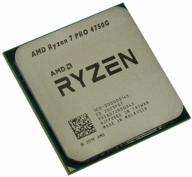
Review on ASUS TUF Dash 15 (2021) Gaming Laptop, 15.6” 144Hz FHD, RTX 3050 Ti, i7-11370H, 8GB DDR4, 512GB PCIe NVMe SSD, Wi-Fi 6, Windows 10, Eclipse Grey, TUF516PE-AB73 by Mateusz Grzesiak (M ᠌

Quality is top notch, happy with everything.
In general, before the global shortage and the total rise in price of everything and everything, a perfectly balanced laptop without any critical errors. The design is good, the body is quite thin, durable and not very bulky, it is convenient to carry with you on flights. Good autonomy on the built-in Iris Xe video. Adjustable cooling system. Convenient in rendering and thanks to the RTX3070 video card, it copes with tasks with a bang!
- An excellent thin laptop for a small price and much more profitable than buying a full-fledged computer during the wild rise in price of video cards! The processor is enough for all work and gaming tasks, in the boost per core it shows a maximum of 5.3GHz. The video card is 15% faster than some desktop (read full-fledged) versions of the RTX 3060ti, given that this is a laptop version. Under a long maximum load, my copy of the card (the laptop is on a stand) does not heat up above 65 C. You can raise the performance of the video card to 95-115W without much load on the cooling system (because it is almost identical to the older ROG series including the power subsystem, just asus cuts down as usual performance programmatically so as not to compete with ourselves). Full-fledged Thunderbolt 4 and work with external displays and peripherals (if desired, you can connect full-fledged desktop video cards) Fast memory, good NVMe drive even in the basic configuration.
- BIOS versions, drivers and software are still being finalized and constantly ated. Could make a full-fledged unlocked bios, like in ROG versions. A very strange algorithm for the operation of the processor and cooling system in standard and quiet modes - it is better to set them manually using third-party software or wait for adequate ates. In the older ROG series, everything is built much better with very similar characteristics. Apparently, Asus engineers are still trying to find a compromise so that, God forbid, they don’t do everything as well as in older series laptops (and it would be worth paying 2-3 prices for). Speaking of displays: there are several versions of FHD displays in these laptops (outwardly relatively similar, the LG version is slightly better, but there are few visual differences, and a normal designer will still work on an external calibrated monitor), the best option is a 2K display, but it is better order and install separately (or work on an external display), because in the configuration from Asus, the price of a laptop with a 2k display immediately takes off at least twice! There are questions about the drivers, because when working on an external display via Thunderbolt 4, the performance of the video card can "magically" increase by about 20-25% (and this feature is found in many Asus laptops, including very expensive ROG series), but in general this everything is not very critical and easily fixable.
New products
Comments (0)
Top products in 💻 Laptops

13-Inch Apple MacBook Pro with 8GB RAM and 512GB SSD Storage in Space Gray - Previous Model

77 Review

Renewed Lenovo Legion 5 Gaming Laptop: 15.6" 144Hz, AMD Ryzen 7-4800H, 16GB RAM, 512GB SSD, RTX 2060 6GB, Phantom Black

95 Review

HP Pavilion Gaming 15-ec2048ur 15.6" Laptop 1920x1080, AMD Ryzen 5 5600H 3.3GHz, 8GB RAM, 512GB SSD, NVIDIA GeForce RTX 3050, DOS, 4E0T5EA, Dark Grey/Bright Green Chrome Logo

77 Review

Apple MacBook 13 Inch 2 3GHz 256GB

92 Review
Another interesting products

HP Pavilion Gaming Desktop Computer, Ryzen 5 3500 Processor, NVIDIA GTX 1650 4 GB, 8 GB RAM, 512 GB SSD, Windows 10 Home (TG01-0030, Black)

11 Review

Processor AMD Ryzen 7 PRO 4750G AM4, 8 x 3600 MHz, OEM

11 Review

27" Apple iMac All-in-One (Retina 5K, Mid 2020) MXWT2RU/A, 5120x2880, Intel Core i5 3.1GHz, 8GB RAM, 256GB SSD, AMD Radeon Pro 5300, MacOS, Silver

13 Review

🖥️ Dell Optiplex 990 Tower Business Desktop Computer: Intel Quad Core i5, 8GB RAM, 500GB HDD, Windows 10 Pro (Renewed)

12 Review

